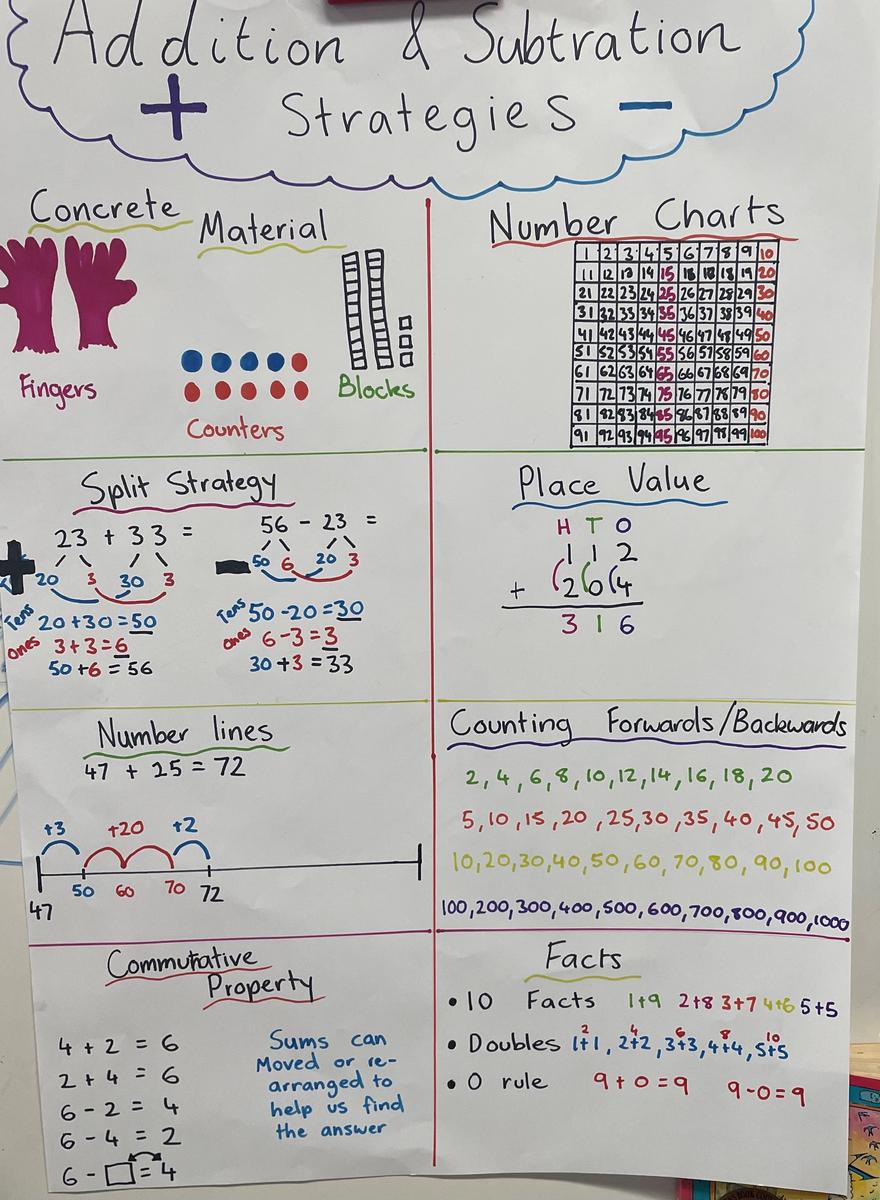Literacy and Numeracy News
BE INVOLVED, BE CONNECTED

Literacy and Numeracy News
BE INVOLVED, BE CONNECTED
What strategy is best?
299 + 47
401 - 56
When you look at the sums above, how do you try to solve these in your head? Chances are that we fall back to the methods that we learned when we were in primary school. I would even bet that some of us tried to visualise a vertical algorithm and pictured putting the numbers vertically underneath each other and trying to trade - cross out, don’t forget to add the one.
In the past, Mathematics could sometimes feel like a list or rules and algorithms to learn and follow. It didn’t really matter if you understood why they worked or how they related to place value and number concepts. The expectation was to use the algorithm even if you didn’t know why.
Now as teachers we focus on ensuring students have a strong Mathematics conceptual understanding and that they are able to use a range of strategies when problem solving. We start by ensuring students understand the big ideas in Mathematics, including trusting the count, place value and part-part-whole understanding. This means we want students to understand how numbers can be combined or separated, especially into their place value amounts of hundreds, tens and ones. When students have a strong understanding of these skills they are able to use efficient strategies when solving problems involving the four operations. Once students have a strong understanding of how to manipulate numbers, then we want to build these skills into fluency, allowing them to solve more complex problems.
An example of this is that in Grade 2, students are moving from counting all and counting on, to beginning to use a range of strategies. When students are able to use materials, number lines and a split strategy (dividing numbers into tens and ones to add together), then students not only really strongly understand addition and subtraction, they are also able to choose the strategy that makes the most sense for the problem. Solving a problem like 299 + 47, then could turn into moving one across and solving 300 + 46. Looking at 401 - 56, students might say, let’s take away one first, then 400 - 55, next I’ll take away 50 which is 350, and take away 5 more equals 345.
As students move into fluency for solving addition and subtraction problems, we want them to feel confident to tackle a range of problems, by recognising that different strategies can be best depending on the situation. Have a look at some of the strategies the Grade 2 students have been using below to develop their understanding of addition and subtraction and reflect on which strategies they find the most efficient for problem solving.
Ms Davis
Year 2 teacher / Maths Specialist

